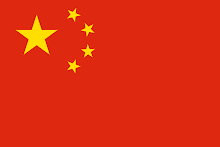 China-ASEAN pact offers more than win-win
China-ASEAN pact offers more than win-win By Brantly Womack
Asia Times Online
"Every country in Southeast Asia has benefited from broader and deeper relations with China, and ASEAN as a regional organization has been strengthened by China's involvement"
The formal inauguration of the ASEAN-China Free Trade Area
(ACFTA) on January 1 marks the culmination of arguably the
most successful big-power diplomacy of the post-Cold War
era.
Since 1991, China's relations with Southeast Asia have
moved from an alliance of convenience with the Association
of Southeast Asian Nations (ASEAN) against Vietnam,
Cambodia and Laos to close and multi-dimensional
interaction with an expanded 10-member ASEAN and with each
of the association's member states (in addition to the
above-mentioned trio, the group now includes Myanmar
alongside founding members Brunei, Indonesia, Malaysia, the
Philippines, Singapore and Thailand).
A similar pattern of China's successful engagement with
neighbors can be seen in the Shanghai Cooperation
Organization with Russia and Central Asia and, less
successfully, in the six-party talks in northeast Asia over
North Korea's nuclear program. With the exception of
China's trans-Himalayan border, promotion of regional
multilateral institutions has progressed hand-in-hand with
strengthening bilateral relationships.
The formula for China's successful good neighbor policy has
many labels, but the simplest is "win-win". Every country
in Southeast Asia has benefited from broader and deeper
relations with China, and ASEAN as a regional organization
has been strengthened by China's involvement.
Trade, investment and tourism have blossomed. China's
willingness to sign the Framework Agreement on
Comprehensive Economic Cooperation in 2002 and the Treaty
of Amity and Cooperation in 2003 encouraged other nations
to follow suit. Despite global economic uncertainty
displacing US-centered globalization, China and ASEAN are
off on the right foot in a new era. But the path ahead is
not simply a yellow brick road of win-win policies.
Why not? What could possibly be wrong with win-win? A
cynical power theorist would say that if one side wins more
than the other, the one who wins less may end up being
dominated by the one who wins more. But this hardly applies
to Southeast Asia. No individual state in Southeast Asia
has ever considered itself the equal of China. Moreover,
China's military budget surpassed the aggregate military
budgets of Southeast Asia in the 1990s. And ASEAN is no
North Atlantic Treaty Organization. Rather than being a
security umbrella for coordinating action in crisis
situations, ASEAN is more of a consensual parasol that
works best in sunny weather. If losing parity with China
were the tipping point for subjugation, Southeast Asia lost
long ago.
Win-win is too simple a formula precisely because of the
disparities between China and Southeast Asia. Individually
and collectively, Southeast Asian nations are more exposed
in their relationship with China than vice versa. According
to estimates of the Central Intelligence Agency in the
United States, all of ASEAN together in 2008 had only
one-third of China's gross domestic product (GDP) in terms
of purchasing power parity (PPP). The economy of Shanghai
is one-and-a-half times that of Singapore. Guangdong's GDP
exceeds that of Indonesia, while the combined economies of
Guangxi and Yunnan, middling provinces by Chinese
standards, exceed those of their neighbors Vietnam, Laos
and Myanmar.
Therefore, Southeast Asia is necessarily more alert to the
risks as well as the opportunities of its relationship to
China. Proportionally, it has more at stake, and the sense
of risk as well as opportunity is all the more vivid to
individual states in Southeast Asia.
Southeast Asia's dilemmas in dealing with China can be
illustrated by the recent controversy in Vietnam over
Chinese investments in bauxite mining and processing. It is
certainly a win-win situation. The Chinese company
involved, Chinalco, is a major global investor in bauxite
mining and alumina processing. Bauxite occurs in limestone
areas with poor agricultural prospects. Vietnam has the
world's third-largest bauxite reserves, and hopes to
attract US$15 billion in investment in this area by 2025.
It needs the investment in the current global economic
climate, and it also needs to offset its severe balance of
payments deficit with China.
But the Vietnamese people have been very concerned about
Chinese bauxite development. They are concerned about the
ecological effects of mining; about the major stake that a
powerful Chinese company would have in central Vietnam; and
about losing jobs to imported Chinese workers. They do not
want to have the future of a major national resource in the
hands of an outside power. Win-win is not enough. Vietnam
wants reassurance about its long-term interests because it
is dealing with a much larger neighbor.
Similarly, the proposal of two corridors, rail and highway,
from Nanning, the capital of the coastal Guangxi autonomous
region, bordering Vietnam, to Singapore would undoubtedly
benefit Vietnam. The corridors would run most of the length
of Vietnam, thereby improving domestic transportation as
well as connections to China and to the rest of mainland
Southeast Asia. However, given current patterns of trade,
far more goods will be coming down the corridors from China
than going up from Vietnam, and much of Vietnam's exports
would continue to be raw materials and resources.
This is still win-win for China's producers and Vietnam's
consumers, but consumers also need to produce, and
Vietnam's economy must continue to modernize and become
more sophisticated. It is therefore hardly a surprise that
on such win-win projects China pushes forward while Vietnam
hesitates. A change at the periphery of China's economy
could affect the heartland of Vietnam's.
Vietnam is the most sensitive country in Southeast Asia to
China, but the entire region is aware that its interests
and China's interests are not identical, even if many are
compatible. The problem of asymmetric relationships cannot
be solved, it can only be managed.
Take for example China's single most successful gesture in
its regional relations. In 1997, China held the value of
the yuan steady against the dollar while the Southeast
Asian currencies were falling. Its neighbors were impressed
that China could succeed where they failed, and they were
grateful that China prevented a race to the bottom in
currency devaluations.
Since August 2008, China has pursued exactly the same
policy, but its effects on Southeast Asia are the opposite
of a decade earlier. Now the yuan's peg to a declining US
dollar is forcing neighbors to compress their currency
values in order to maintain market share. China's neighbors
wonder how long currency compression will last and what
will happen when the yuan finally does revalue. There is
little reassurance from China, and no claim that it is
helping the neighborhood.
The tension between China and Southeast Asian states over
conflicting claims in the South China Sea has become the
symbol of the region's collective uneasiness concerning
China's commitment to cooperation. The "Declaration on the
Conduct of Parties in the South China Sea" signed in 2002
was a watershed event in regional confidence-building, but
there has been little further progress.
Moreover, China's expansion of naval facilities on Hainan
raises concerns throughout the region regarding China's
military transparency and intentions. In fact, however,
multilateral cooperation is the only feasible way for any
country, China included, to profit from the disputed area.
It would be difficult to extract oil at gunpoint, and the
costs to China's regional and even global relations would
outweigh any possible gains. The only winning path in the
South China is one of more serious cooperation and
reassurance.
While win-win is the slogan of the day, deeper principles
have lain behind China's successes of the past two decades.
China's willingness to work with multilateral regional
institutions has been a big part of the winning formula.
Participation in ASEAN's general relationship with China
buffers the exposure of each individual state. This
benefits China as well as ASEAN.
Vulnerability causes smaller states to hesitate in
asymmetric relationships, while collective agreements
reduce individual vulnerability. Within each bilateral
relationship, sensitivity to the dilemmas faced by the
smaller side even in a win-win situation is essential for
continued development.
For example, not only does Vietnam have reason to expand
its merchandise market in China, but China has an interest
in Vietnam's marketing success. Currently, Vietnam's weak
sales to China are a major trade bottleneck; a more
balanced relationship would enable trade volume to expand
on a solid basis.
Finally and most importantly, China's traditional respect
for the sovereignty and autonomy of all states becomes ever
more important with the growth of China's relative power.
As Sophie Richardson's recent book on China-Cambodia
relations demonstrates, the "Five Principles of Peaceful
Coexistence" have been an especially important foundation
of China's relations with smaller states. [1] The time has
come to multilateralize the five principles into a general
respect for regional consensus and international agreements
and institutions.
In the new era of global economic uncertainty, the risks
that smaller countries face are more vivid than their
opportunities. The special task faced by regional powers,
whether China, or South Africa, or Brazil, or India, or
Russia, is to earn regional leadership by reassuring
neighbors that their interests and voices will be
respected.
Moreover, they need to take the lead in regional projects
that address common problems. But to do so effectively they
must act in a spirit of multilateral respect. For the past
two decades, China has led the cohort of regional powers in
developing cooperative relationships with neighbors, and
one of the fruits of success is the successful beginning of
ACFTA. But it is only a successful beginning, it is not the
end of the road.
Note 1. China, Cambodia, and the Five Principles of
Peaceful Coexistence, by Sophie Richardson. Columbia
University Press, 2009.
Brantly Womack is the Cumming Memorial Professor of Foreign Affairs at the University of Virginia. His recent books include China and Vietnam: The Politics of Asymmetry (Cambridge University Press, 2006) and China among Unequals: Asymmetric Foreign Relations in Asia (World Scientific, forthcoming).




No comments:
Post a Comment